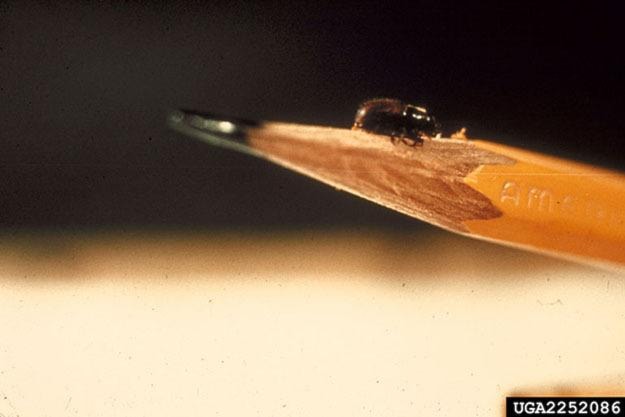The dreaded Douglas fir bark beetle, which has resulted in massive clear-cutting on Boulder Mountain, has spread its wings to Mount Macpherson.
The discovery could mean further logging of the mountain bike trail network, though foresters say they are still assessing the extent of the issue and no decisions have been made on future logging.
"One of the things we've been doing over time is we've been monitoring it," said Earl Hunt, a forester with BC Timber Sales, which is the land manager for the Macpherson area. "You have beetle in the Revelstoke area and you monitor it and you come up with various strategies on how to deal with it. We're seeing an increase of activity in that area than what's occurred in the past."
The Douglas fir bark beetle is a tiny insect that burrows into Douglas fir trees to lay its eggs. According to the BC Ministry of Forests, it is the principal killer of mature Douglas fir in the province. It usually attacks mature or dying trees, but if its numbers grow large enough in a certain area, it will start attacking healthy trees.
The beetle was the reason large swaths of Boulder Mountain were logged in 2010 and 2014, and a smaller block was logged last year.
"It's a growing problem almost everywhere Douglas fir is growing in the interior of B.C.," said Dr. Allan Carroll, a researcher at the University of British Columbia whose expertise includes management of forest insects. "It's a close relative of the mountain pine beetle, to give you an idea of what it's all about."
Its presence on Macpherson, if widespread, could mean more clear-cutting there. This news comes a few months after a cut block was logged around the upper section of the TNT trail.
Hunt said they are still assessing the problem and are working on a plan to deal with the issue. A meeting is planned with the Revelstoke Cycling Association this week.
"It's something we've been monitoring for some time so we're just getting the final data processed at this point," he said.

Photo: Douglas fir beetle larvae in a tree. ~ Photo by US Forest Service
There are several ways to deal with Douglas fir beetle, said Carroll. First, land managers should ensure trees are as strong and healthy as possible so they have the ability to fend off the beetle. Trail builders should avoid cutting out roots to avoid weakening trees. "Trees don't like that kind of thing and that causes them a bit of stress and that makes them more likely to be attacked by beetles," said Carroll.
Another option is limiting beetle habitat by removing downed trees and branches where beetles are more likely to be found.
"Anytime you wind up with a lot of big branches and parts of trees on the ground, you're going to give the beetle an opportunity to build up its population," said Carroll. "If I'm managing the area, I'd be careful to ensure there's as little habitat for a growing population as possible."
If the population is small, you can try to only remove infected trees and destroy them.
The most interesting technique Carroll brought up was using the beetles technique against them. When the Douglas fir beetle approaches a tree, the tree will release toxins to fight back, he explained. To overcome this, the beetle will release an aggregation pheremone to summon other beetles. Eventually, they'll overwhelm the trees defences and burrow in to lay their eggs. Once the tree is conquered, the beetles will emit an anti-aggregation pheremone, telling other beetles to stay away.
Insect ecologists have figured out how to use this strategy against the beetle. First, they can down a healthy tree and infect it with the aggregation pheremone. You then place the anti-aggregation pheremone on healthy trees. The beetles will infest the downed tree, at which point, it can be taken away and destroyed.
"This works really, really well with the Douglas fir beetle, except when the populations get too big to do that sort of thing," said Carroll. "The problem in terms of all of this is that usually by the time you notice you have an issue, typically the population of beetles has grown so large it's difficult to manage with these sort of tactics. You have to be very vigilant to keep an idea of what the population of beetles is actually doing."
Finally, you can simply clear-cut the area where beetles are present in big numbers to stop their spread.
As for Macpherson, Hunt said they have a duty to manage forest health, and that includes managing beetle outbreaks where they occur. BCTS hope to have a plan in place in the spring.
At that point, "It will become a lot clearer as to what our plans are, what we're planning on doing," said Hunt.
